I don’t believe anyone can resist a good curry dish, especially if you hail from Asia and more specifically Southeast Asia. There were many times I braved through potential stomach upsets in order to savour delicious curry, I have a weak stomach you see. But that can’t stop my love for spicy food and Thai curry, be it the red curry, green curry, yellow curry, massaman curry, or panang curry. This Thai red curry paste recipe is easy to make and is a versatile base for delicious curry dishes, fish cakes, or even fried noodles or fried rice. I’d never go back to store-bought curry paste again.
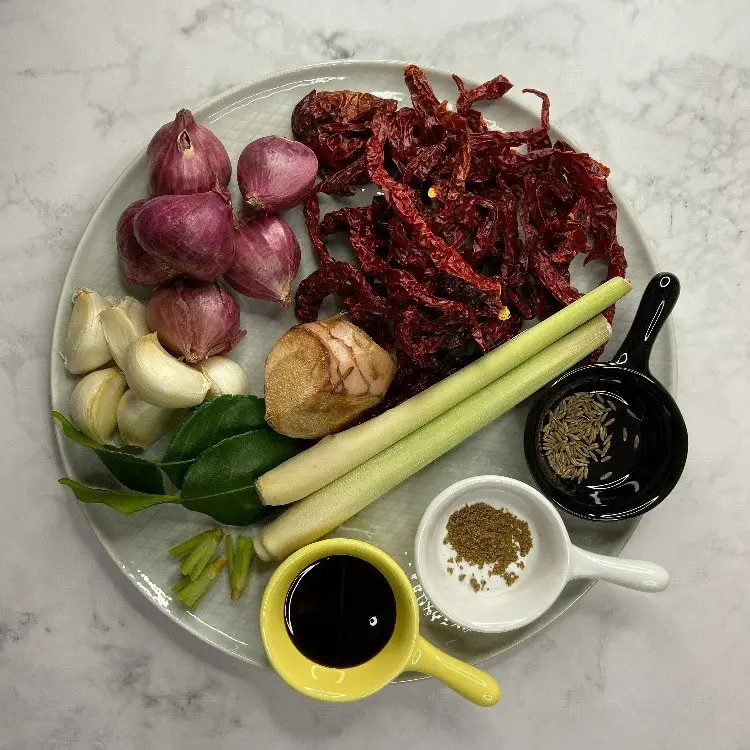
What is Thai red curry paste made of?
The key to Thai red curry paste is the ingredients:
- Dry red chilli is the star ingredient, instead of fresh chilli. The redness, earthiness, smokiness, and spicy level is more intensified compared to fresh chilli. Soak it in hot water and chop it into smaller pieces for easy blending or pounding later. If you can’t take too much spiciness, you can remove the seeds after hydrating it. Separately I have also used fresh red chilli and it yields an orangey-red tone (see below picture).
- Garlic & shallots (baby red onions) need no explanation. It’s the base ingredients for almost every other Asian cuisine.
- Lemongrass, oohhh I love love lemongrass and have used it in hot teas, cold drinks, stews, soups as well as curries. It has a zing of citrus flavour that is very distinctive and sure to bring the taste to a different level. Besides being used in food, lemongrass contains citronella, a natural oil that keeps the mosquitoes away.
- Cumin powder or cumin seeds has a slightly sweet nutty flavour and is a great boost to chilli. It is used to make medicine for digestion problems and as a diuretic as well as an aphrodisiac.
- Coriander powder or coriander seeds (I used coriander powder in this recipe) is full of citrusy sweet flavours, a great complement to curry, and boasts of several health benefits.
- Galangal, also known as blue ginger or lengkuas. Native to South Asia, Galangal has been used in Ayurvedic and traditional Chinese medicine for centuries. Using normal ginger will yield a different taste as the galangal has a very unique aroma and taste that’s sharp, strong, hot with a hint of citrusy sweetness. Chop it finely or grate it as it’s very hard and can be difficult to pound or blend.
- Fresh coriander roots. It’s the roots of the coriander herb, also known as Chinese parsley or cilantro. The root is very aromatic yet earthy. Most supermarkets in the US or Europe will have the roots removed but in Asia or Asian stores in the West, it’s not difficult to find the whole plant in store. I’d wash the roots to remove any soil residue.
- Kaffir lime leaves and skin. A very aromatic and citrusy ingredient from the kaffir lime plant, commonly used to infuse curries, soups, stews, and stir fry dishes. If you can’t find kaffir lime, you can also use lemon tree leaves, I took some from a lemon tree while I was in Southern Italy and was very surprised the leaves actually smell quite close to kaffir lime leaves, though the latter is definitely the number choice for curry paste. Similarly kaffir lime skin or peel or zest as some may call it, has an intense citrus yet bittersweet aroma that adds flavours to curry dishes.
- Shrimp paste which I tend to be careful as I had it in a fruit rojak (a type of local salad) in Malaysia before and suffered from allergy rashes all over my body. Shrimp paste is made of fermented shirmps and salt and since it’s fermented seafood, it can be kept for a very long time and is very pungent in smell. The dry shrimp paste, belacan is the Malaysia version that is typically roasted to release the aroma and flavour before pounding it. Pounding in a mortar and pestle crushes the cells of the belacan to produce better flavours. And since I’m blending it, I used the liquid form of the shrimp paste.
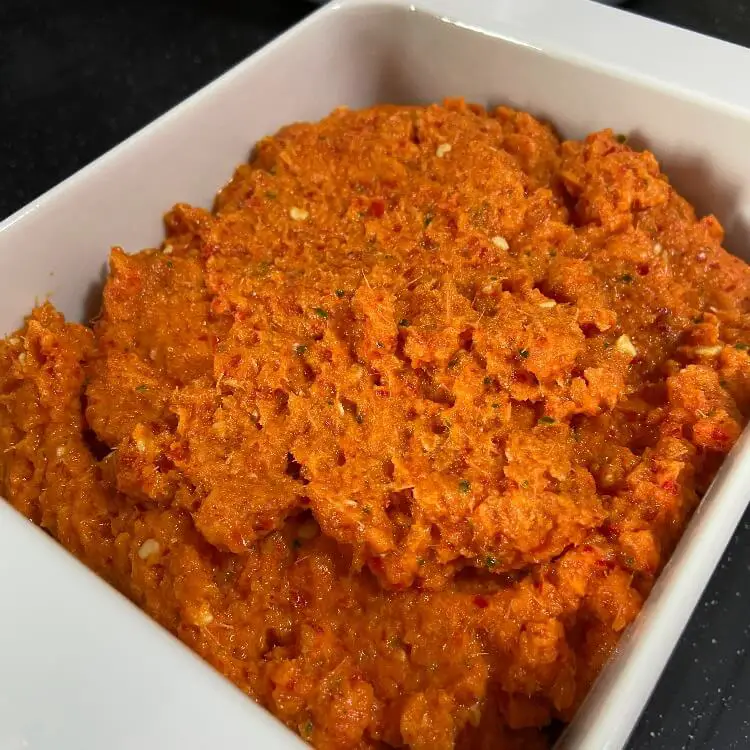
Truly authentic Thai curry pastes are typically made by grinding the ingredients in a mortar and pestle for a good 20-30 minutes, until the paste is smooth and rich. It takes a lot of hard work and muscle strength, as well as perseverance. The paste made this way will turn out really aromatic as the heat and pressure grinding the ingredients will help release more of the natural oil and flavour. For me, I used a blender, quick and easy that took me only less than 10 minutes.

How to store the curry paste?
You can store the paste in an airtight container in the fridge for up to 1 month or freezer for up to 3 months.
What do you use the curry paste for?
Thai red curry paste is a base for many Thai dishes. Add meat, potatoes, tofu puffs and coconut milk, you get nice meat curries. Add fish paste and french beans, you get Thai fish cakes. I also like to add some other Asian dishes to complement to curry dishes, such as the Nonya Achar.
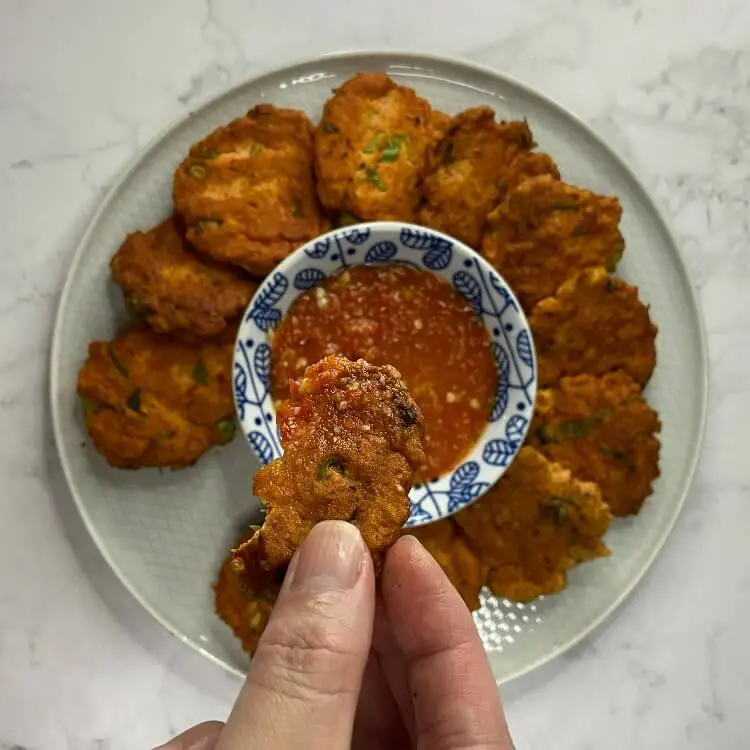
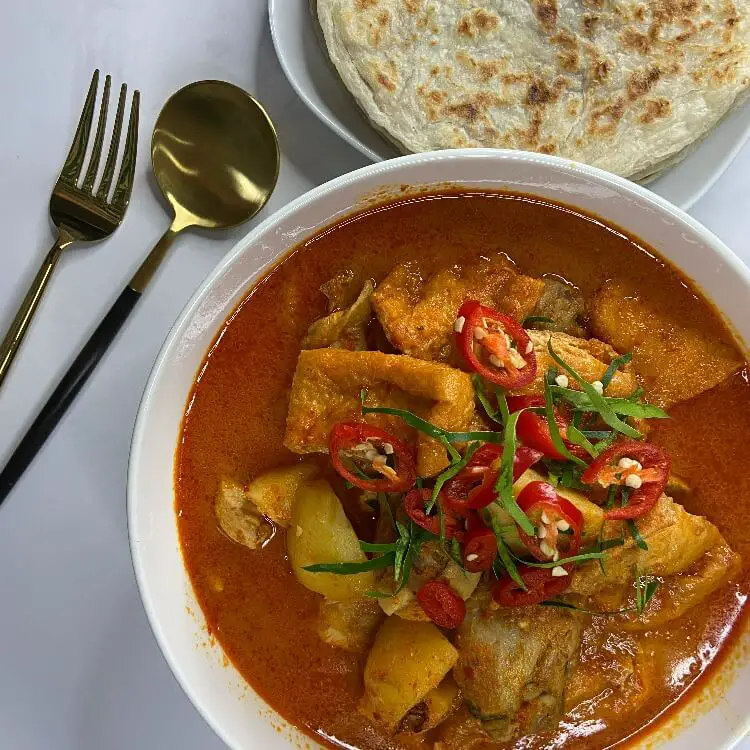
What’s the difference between a Thai red curry and a Thai green curry?
Thai red curry is made of dry red chillies that give it a deep red colour. Thai green curries typically contain basil, coriander, that gives it the green tint in colour. Both are super yummy.
Watch how to make Thai Red Curry on YouTube
Thai Red Curry Paste
Ingredients
- 20-25 dry chilli
- 6 cloves garlic
- 6 shallots
- 3 fresh coriander roots
- 1 inch galangal
- 1 tbsp shrimp paste
- 3-4 kaffir leaves
- ½ tsp cumin powder or cumin seeds
- ½ tsp coriander powder or coriander seeds
- 2 stalks lemongrass
Instructions
- Soak dry chillies in hot water for about 10 minutes to soften it. Keep the chilli water for blending later.
- Peel and cut garlic, shallots, galangal into smaller pieces. The smaller the better.
- Remove stem from kaffir lime leaves, stack all the leaves together and roll them like a cigar. Slice the leaves thinly.
- Remove both ends and the outer layers of lemongrass. Bruise the lemongrass by hitting it with the back of the knife. Slice the lemongrass thinly.
- Cut the softened dry chillies into smaller pieces.
- Grind the cumin seeds and coriander seeds in the blender. If you are using cumin powder and coriander powder, you can skip this step and just add the powder to the ingredients for blending.
- Add all ingredients into the blender – chilli, garlic, shallots, galangal, lemongrass, cumin powder (or ground cumin seeds), coriander powder (or ground coriander seeds), shrimp paste.
- Add about 3-4 tbsp of the chilli water.
- Start blending at high speed.
- Add more chilli water according to the dryness of the paste to make it easier to blend, if necessary.
- Once paste is consistently blended and quite smooth, the paste is ready.

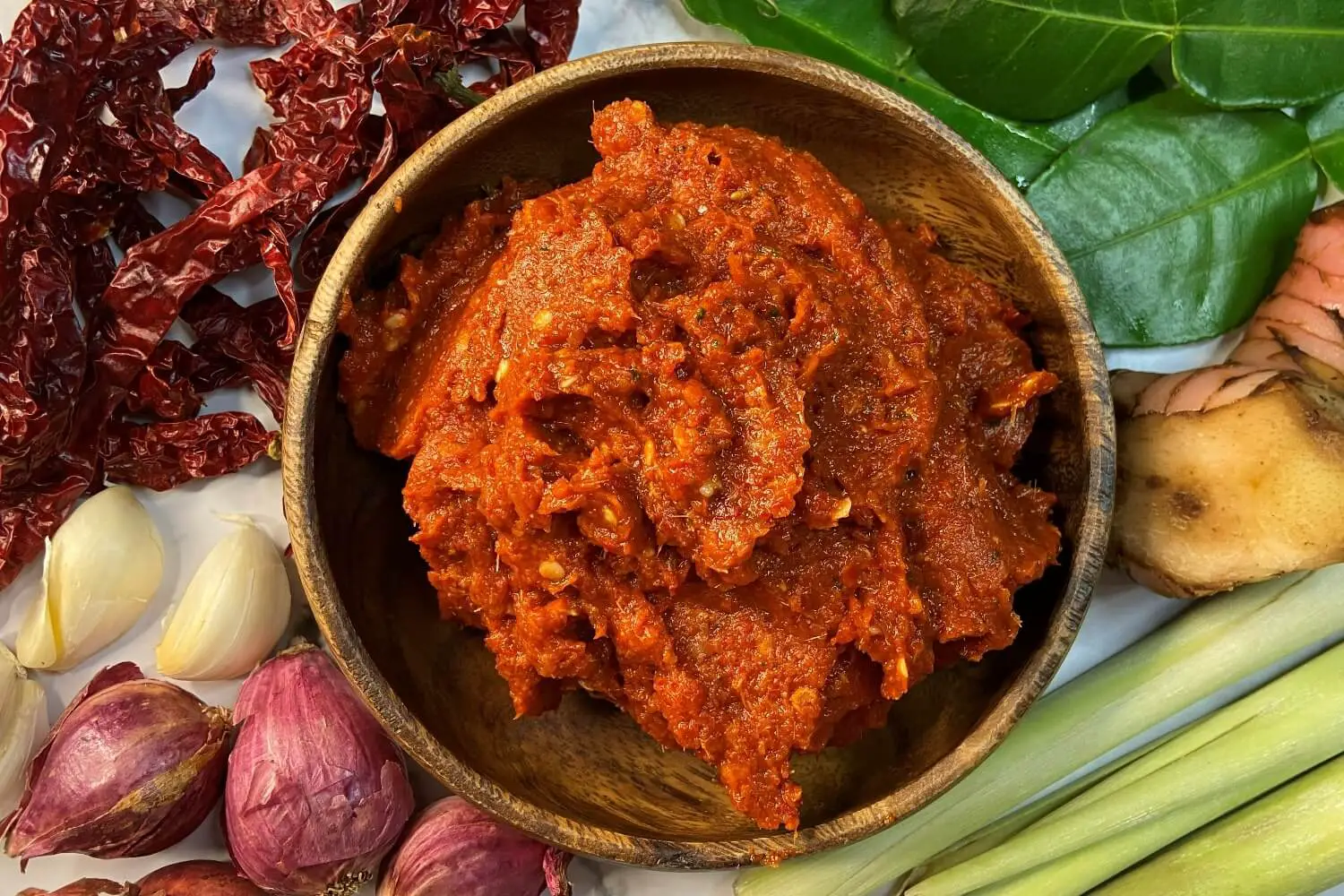
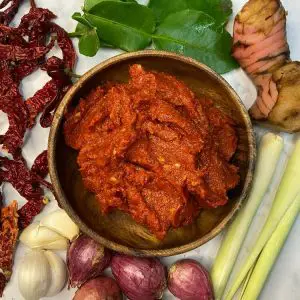
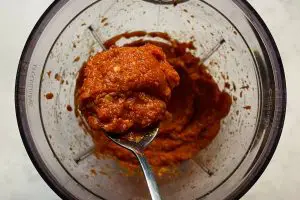
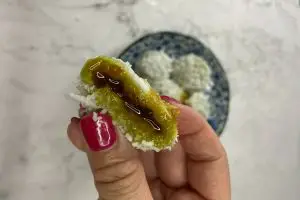 Ondeh Ondeh Gula Melaka
Ondeh Ondeh Gula Melaka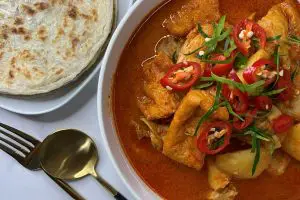 Curry Chicken
Curry Chicken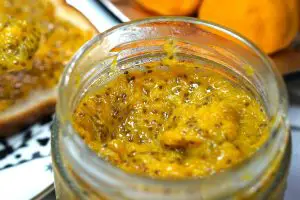
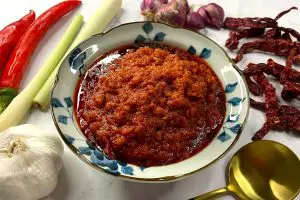



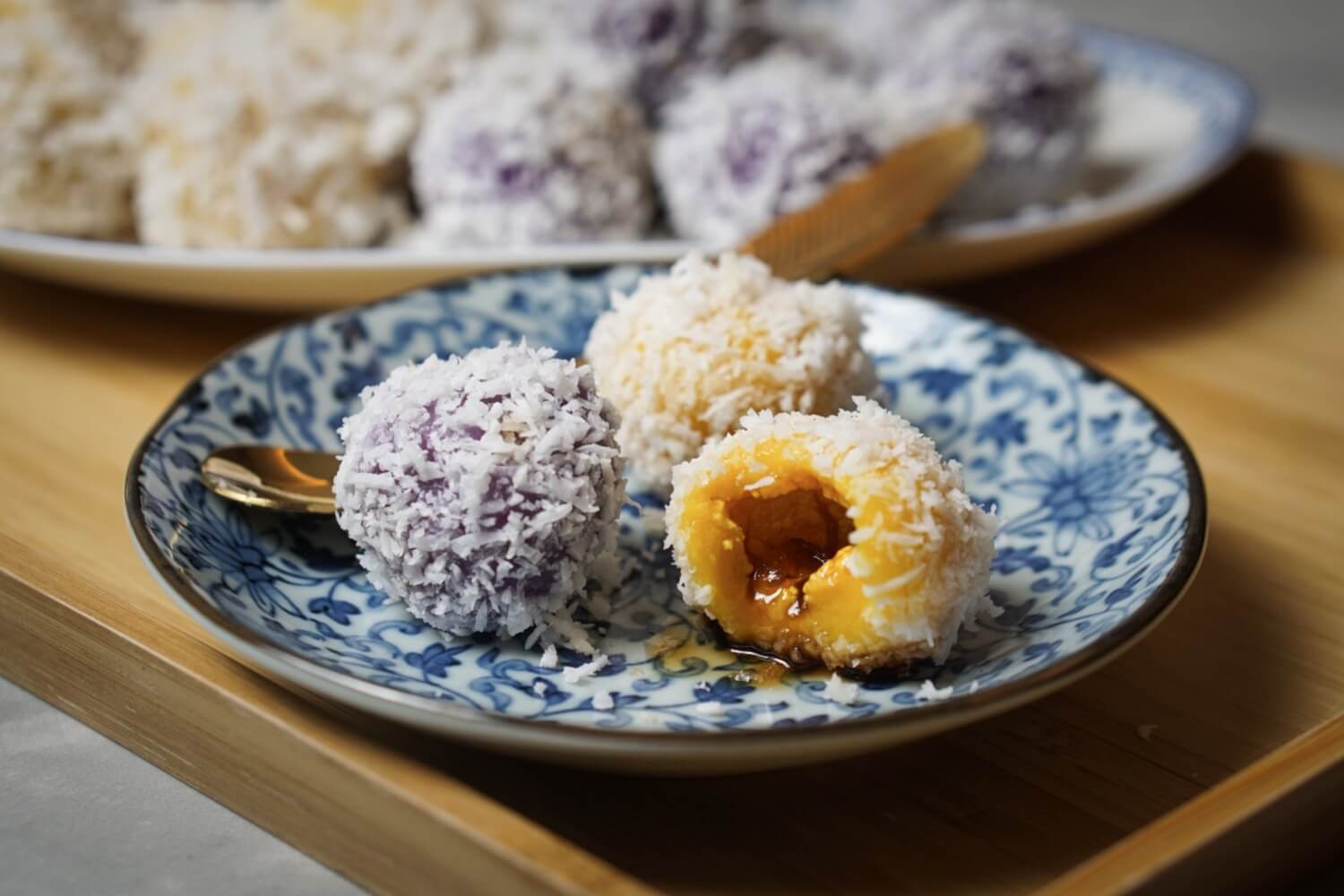
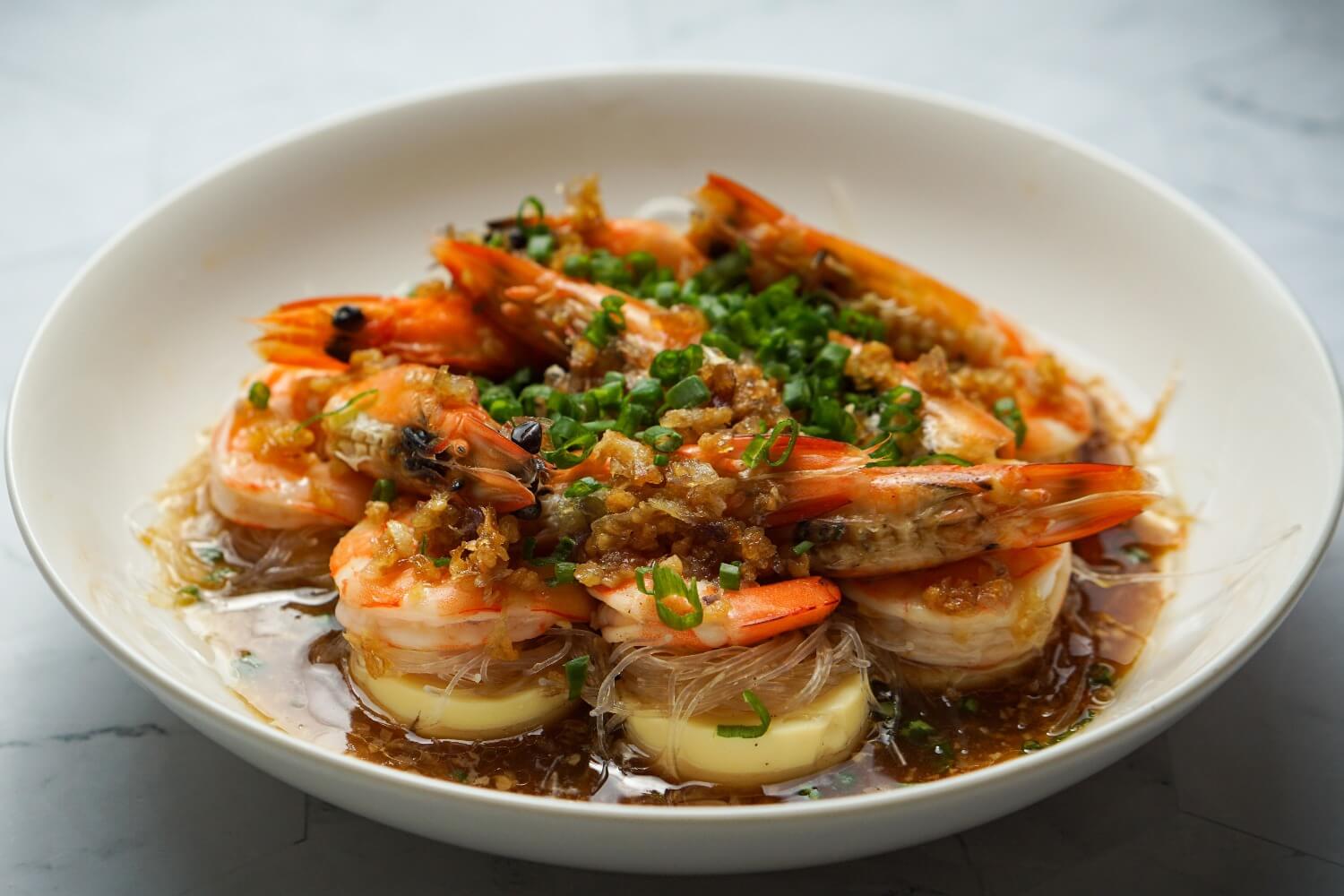
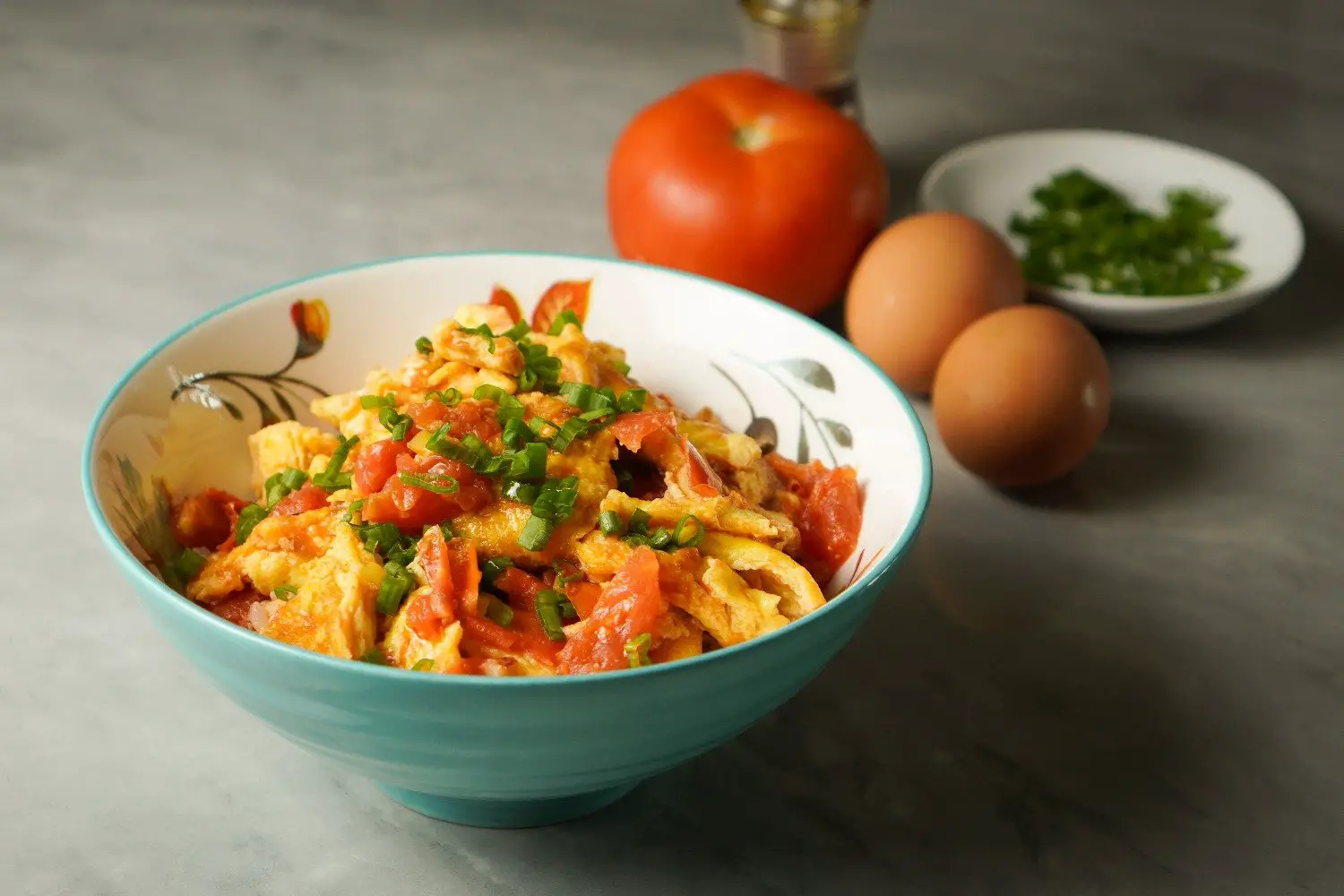



28 October 2021 at 1:10 pmThat’s amazing, thanks for sharing!
28 October 2021 at 1:17 pmThank you dear!